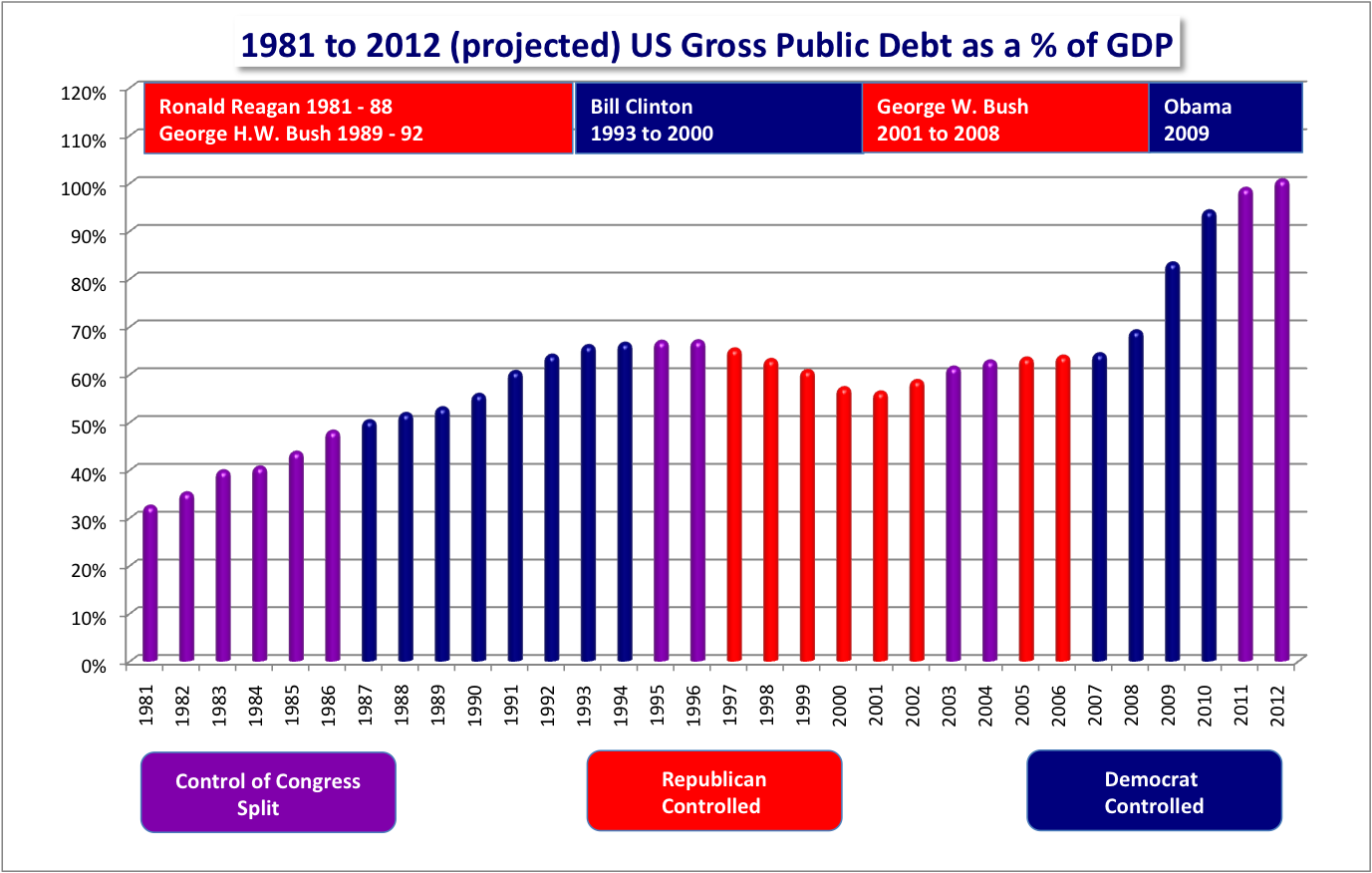WTF!
The image shown below by WTFNoWay.com has been generating quite a bit of interest. It shows $15 trillion as a stack of $100 bills; one that dwarfs the Statue of Liberty. Other than reinforcing the idea that $15 trillion, and by association US public debt, is a staggering amount of money, is it actually useful? Not particularly in my opinion. Also the choice of $100 bills seems somewhat arbitrary. The image is one of a series that starts with a single $100 bill - something familiar to most Americans. A $1 bill is probably even more familiar and would have produced a far bigger stack; a bar of gold bullion, somewhat smaller.

What Crisis?
Joe Weisenthal was particularly scathing in his critique of the WTFNoWay image. He contrasted the image with charts (see below) showing that the cost of servicing the debt as a percentage of GDP and as a percentage of total government spending are at historical lows. However, interest rates are particularly low as well, important context that is absent from Joe's charts. Business Insider have published eight more charts that provide additional insight into the current US debt situation.


Who's to Blame?
The chart below from Wikipedia gives the impression that debt (as a percentage of GDP) has grown under Democrat control of Congress and stabilised or shrunk under Republican control.

However, if we look at total government debt (rather than as a percentage of GDP) then it appears that much is due to spending by the GW Bush administration (although Congress was under Democrat control from 2007) as shown in the following chart published in the New York Times (via a friend).

Finally, Alan Kohler presented a couple of interesting charts during the finance section of the ABC TV news. The first is similar to the previous two as it shows the growth of the US debt ceiling under previous administrations; Republicans raised it more often than Democrats. The last two show the gulf between US government tax receipts and public spending both current and historical.



The Big Picture
All of the visualizations paint a different picture of the debt situation: alamism (WTFNoWay); what crisis? (Joe Weisenthal); blame the Democrats' (Wikipedia); blame the Republicans (Alan Kohler); blame Bush (NYT). Whether the designers have intended such bias is difficult to know but the above examples illustrate that in isolation, individual charts provide only limited insight into complex phenomena.




